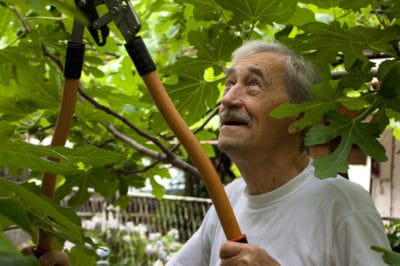Fig Growing Basics
Figs are relatively easy to grow and care for in the right environment. They originated in the Mediterranean and do best in USDA Zones 7 to 11. Growers in colder climates may grow them in containers and move the plants indoors during the winter. Not fussy about soil or fertilizer, figs can develop root rot if over-watered. Watering weekly is usually sufficient.
Fig Varieties
Although commercial varieties are relatively limited, gardeners have many options. Among these are:
- Black Mission – commercial standard.
- Texas Everbearing – good breba crop, hardier than most.
- Black Jack – semi-dwarf.
- Celestial – widely adapted.
- Desert King – excellent flavor, needs minimal pruning.
- Ischia – greenish yellow, less attractive to birds.
- Lattarula – very old variety, widely adapted.
- Purple Smyrna – self-pollinating.
- Violette de Bordeaux – good for containers.
Fig Growth Habits
Fig trees don’t usually produce fruit until about five or six years old. Trees may develop a single trunk or be more of a multi-stemmed shrub. Both will produce suckers. The wood tends to be weak and branches will break easily. Figs produce two fruit crops: breba (these may be inedible) and a main crop. Breba figs grow on old wood and the main crop on new wood.
Pruning After Planting
It’s important that new plants become well-established. The focus is on fostering the development of a strong root system. Most gardeners and orchardists prune fig trees back by half immediately after planting. This sends all the energy to the roots. Cutting back also encourages the growth of side shoots, which makes the tree bushier.
Pruning to Shape
After the first year, the focus of pruning shifts to developing a strong, balanced tree with well-spaced branches that will become the main supports for bearing fruit. Ideally, a fig tree will have five to six scaffold branches that are evenly spaced. This promotes good air circulation and allows sunlight to reach all areas of the tree.
Maintenance Pruning
Maintenance pruning is always done in winter when the tree is dormant. Trim or remove broken or damaged branches, as well as any that show signs of disease. Remove any suckers – they steal nutrients and water from fruit-bearing branches. If you plan to net the trees to protect fruit, top branches at the desired height – usually 10 to 12 feet or less.
